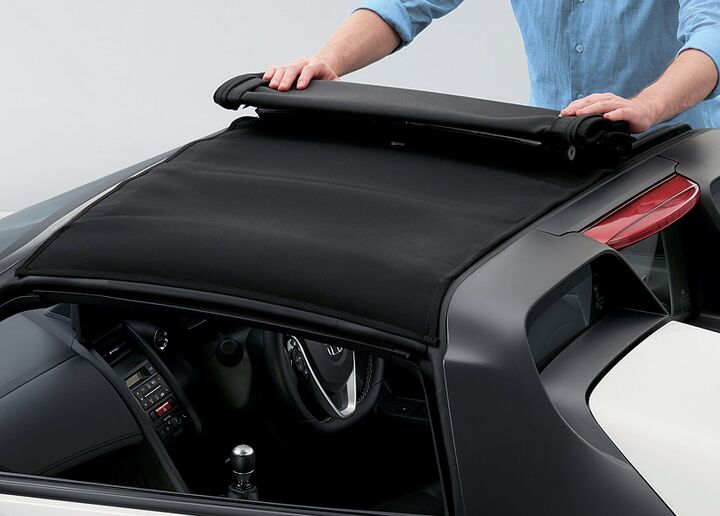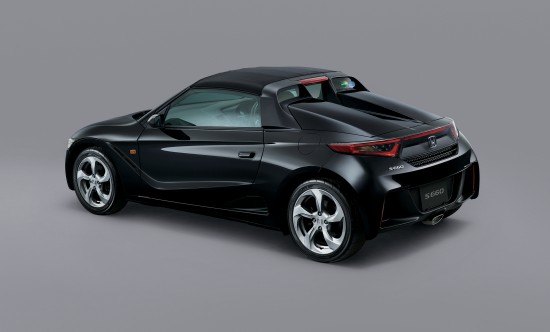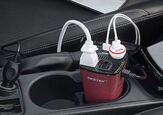Honda S660, The Mid-Engine Honda We've Been Waiting For
While the whole world waited for the next Acura NSX, Honda quietly went about preparing an entirely different kind of mid-engine sports car for its home market.
The S660 will be about the size of the original Beat, largely since it must confirm to Japanese regulations for kei-cars. This means that it’s going to be small. Not Miata small, but original Lotus Elan small.
Underneath, a 660cc turbocharged triple making 63 horsepower is as much as Honda can legally get away with while staying in bounds for kei-car status. A CVT or a 6-speed manual (with an S2000 style shift knob) are the transmission options. Since kei cars would never ever fly in North America, we’ll never seen one Stateside. But maybe in 15 years I’ll scoop one up.
More by Derek Kreindler
Latest Car Reviews
Read moreLatest Product Reviews
Read moreRecent Comments
- SCE to AUX How well does the rear camera work in the rain and snow?
- MaintenanceCosts The Truth About Isuzu Troopers!
- Jalop1991 MC's silence in this thread is absolutely deafening.
- MaintenanceCosts Spent some time last summer with a slightly older Expedition Max with about 100k miles on the clock, borrowed from a friend for a Colorado mountain trip.It worked pretty well on the trip we used it for. The EcoBoost in this fairly high state of tune has a freight train feeling and just keeps pulling even way up at 12k ft. There is unending space inside; at one point we had six adults, two children, and several people's worth of luggage inside, with room left over. It was comfortable to ride in and well-equipped.But it is huge. My wife refused to drive it because she couldn't get comfortable with the size. I used to be a professional bus driver and it reminded me quite a bit of driving a bus. It was longer than quite a few parking spots. Fortunately, the trip didn't involve anything more urban than Denver suburbs, so the size didn't cause any real problems, but it reminded me that I don't really want such a behemoth as a daily driver.
- Jalop1991 It seems to me this opens GM to start substituting parts and making changes without telling anyone, AND without breaking any agreements with Allison. Or does no one remember Ignitionswitchgate?At the core of the problem is a part in the vehicle's ignition switch that is 1.6 millimeters less "springy" than it should be. Because this part produces weaker tension, ignition keys in the cars may turn off the engine if shaken just the right way...2001: GM detects the defect during pre-production testing of the Saturn Ion.2003: A service technician closes an inquiry into a stalling Saturn Ion after changing the key ring and noticing the problem was fixed.2004: GM recognizes the defect again as the Chevrolet Cobalt replaces the Cavalier.fast forward through the denials, driver deaths, and government bailouts2012: GM identifies four crashes and four corresponding fatalities (all involving 2004 Saturn Ions) along with six other injuries from four other crashes attributable to the defect.Sept. 4, 2012: GM reports August 2012 sales were up 10 percent from the previous year, with Chevrolet passenger car sales up 25 percent.June 2013: A deposition by a Cobalt program engineer says the company made a "business decision not to fix this problem," raising questions of whether GM consciously decided to launch the Cobalt despite knowing of a defect.Dec. 9, 2013: Treasury Secretary Jacob Lew announces the government had sold the last of what was previously a 60 percent stake in GM, ending the bailout. The bailout had cost taxpayers $10 billion on a $49.5 billion investment.End of 2013: GM determines that the faulty ignition switch is to blame for at least 31 crashes and 13 deaths.It took over 10 years for GM to admit fault.And all because an engineer decided to trim a pin by tenths of a millimeter, without testing and without getting anyone else's approval.Fast forward to 2026, and the Allison name is no longer affiliated with the transmissions. You do the math.






























































Comments
Join the conversation
The rear deck is strange-looking, but I like every other angle. Long live the Fiat X-1/9!
I like it. The crease that comes down from the front wheels and the wheels themselves are too large. The back looks interesting. Imagine if those lights were flush. The front may be a bit too tame. Hope it catches on. Would love to see other makes take on this sort of thing (especially Peugeot and Fiat).